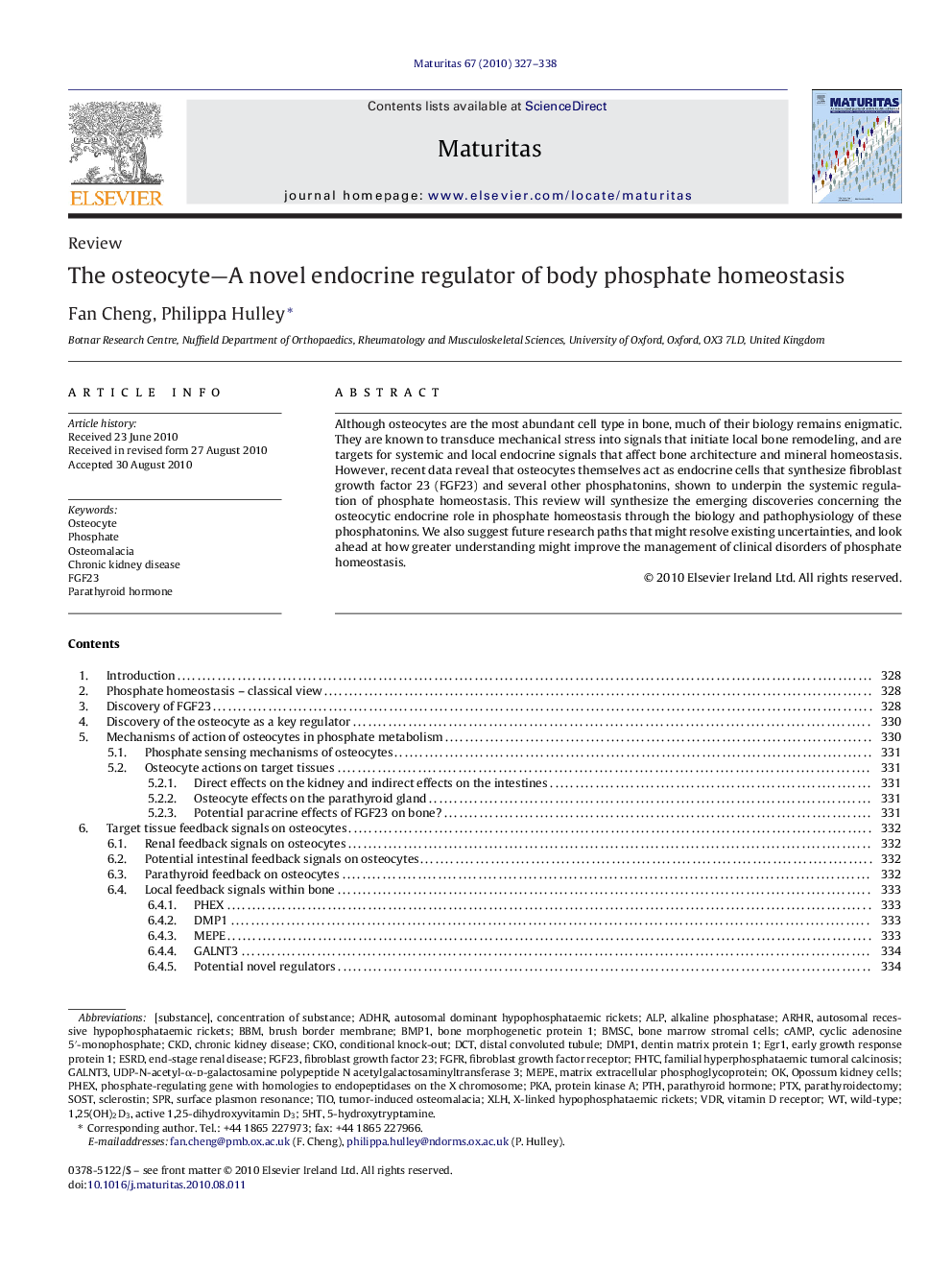| Article ID | Journal | Published Year | Pages | File Type |
|---|---|---|---|---|
| 1918053 | Maturitas | 2010 | 12 Pages |
Although osteocytes are the most abundant cell type in bone, much of their biology remains enigmatic. They are known to transduce mechanical stress into signals that initiate local bone remodeling, and are targets for systemic and local endocrine signals that affect bone architecture and mineral homeostasis. However, recent data reveal that osteocytes themselves act as endocrine cells that synthesize fibroblast growth factor 23 (FGF23) and several other phosphatonins, shown to underpin the systemic regulation of phosphate homeostasis. This review will synthesize the emerging discoveries concerning the osteocytic endocrine role in phosphate homeostasis through the biology and pathophysiology of these phosphatonins. We also suggest future research paths that might resolve existing uncertainties, and look ahead at how greater understanding might improve the management of clinical disorders of phosphate homeostasis.
